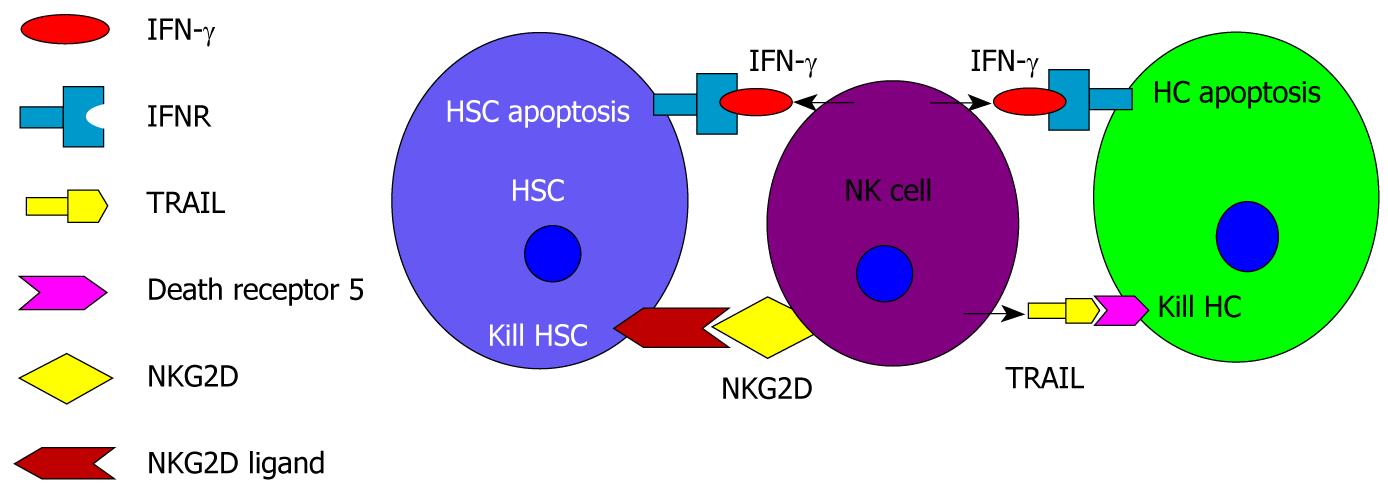Copyright
©2010 Baishideng Publishing Group Co.
World J Gastroenterol. Oct 7, 2010; 16(37): 4652-4660
Published online Oct 7, 2010. doi: 10.3748/wjg.v16.i37.4652
Published online Oct 7, 2010. doi: 10.3748/wjg.v16.i37.4652
Figure 2 Potential roles of hepatic natural killer cells in the development of nonalcoholic fatty liver disease.
Hepatic natural killer (NK) cells may have two different roles in the pathogenesis of nonalcoholic fatty liver disease. (1) NK cells have anti-fibrotic effects. NK cells release interferon-γ (IFN-γ), which combines with its receptor to induce hepatic stellate cell (HSC) apoptosis. Early activated HSCs express increased levels of natural killer group 2, member D (NKG2D). NK cells can kill early activated HSCs by binding NKG2D on NK cells with NKG2D ligand on HSCs; and (2) NK cells induce hepatocyte injury. NK cell derived IFN-γ results in hepatocyte apoptosis. NK cell derived-tumor necrosis factor-related apoptosis-inducing ligand combines with its death receptor 5 to kill hepatocytes. HC: Hepatocyte; IFNR: Interferon-γ receptor; TRAIL: Tumor necrosis factor-related apoptosis-inducing ligand.
- Citation: Zhan YT, An W. Roles of liver innate immune cells in nonalcoholic fatty liver disease. World J Gastroenterol 2010; 16(37): 4652-4660
- URL: https://www.wjgnet.com/1007-9327/full/v16/i37/4652.htm
- DOI: https://dx.doi.org/10.3748/wjg.v16.i37.4652









